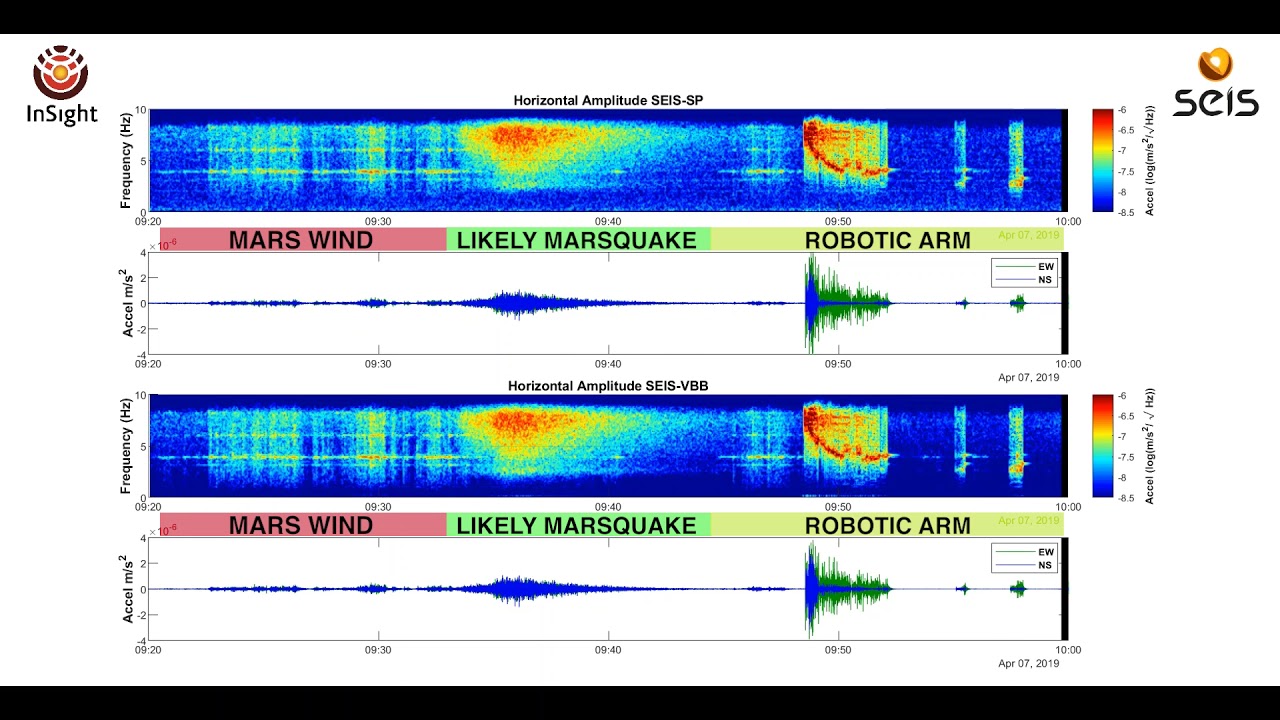Mars trembles
Four months after landing on Mars, the InSight probe has already transmitted promising signals. According to researchers at ETH Zurich's Marsquake Service, at least one of the tremors can be interpreted as a quake.
The InSight probe (see box) has already transmitted a range of signals from Mars to Earth. This is good news for ETH Zurich. The detection of these signals is due, at least in part, to the highly sensitive electronics of the seismometer developed at the university's Aerospace Electronic and Instrument Laboratory. "The measurements show that our electronics are running smoothly up there," says Domenico Giardini with a smile. The Professor of Seismology and Geophysics coordinates the activities at ETH for the InSight mission. Seismic signals recorded on Mars are relatively quiet and and therefore difficult to assess. Do they come from the wind? Were they a result of meteorite collisions? Or, are they in fact caused by geological processes inside the planet? Researchers at the ETH Marsquake Service have interpreted a seismic event that reached Earth on 6 April 2019 as a possible marsquake.

Mars is seismically active
"The signal seems to come from within the planet," says Simon Stähler of the Seismology and Geodynamics Group that operates the Marsquake Service at ETH Zurich together with researchers from the Swiss Seismological Service. However, it is not yet clear exactly what caused the tremor.
For the scientists, it comes as a surprise that the measurements indicate that marsquakes are much more like moonquakes than earthquakes. "So far, we have assumed that the crust of Mars is similar to the Earth's crust," says Stähler. While the Earth's crust consists of solidified rock, the moon's crust is heavily rugged due to continuous meteorite collisions. "The fact that the wave form of the marsquakes resembles the moonquakes gives us for the first time a picture of how the Martian crust is internally structured. Until now, we could only look at it from the outside," explains Stähler.
While the measurements support the assumption that Mars is seismically active, the signals are still too quiet to give any indication of the inner geological structure of the planet beneath the crust - one of the goals of the InSight mission. The researchers now hope that stronger quakes will allow them to draw even further conclusions in the future about the deep interior of Mars.
Studying the "inner space" of Mars
InSight, short for Interior Exploration using Seismic Investigations, Geodesy and Heat Transport, is a Mars lander designed to give the Red Planet its first thorough checkup since it formed 4.5 billion years ago. It is the first outer space robotic explorer to study in-depth the "inner space" of Mars: its crust, mantle, and core.
Studying Mars' interior structure answers key questions about the early formation of rocky planets in our inner solar system - Mercury, Venus, Earth, and Mars - more than 4 billion years ago, as well as rocky exoplanets. InSight also measures tectonic activity and meteorite impacts on Mars today.
The lander uses cutting edge instruments, to delve deep beneath the surface and seek the fingerprints of the processes that formed the terrestrial planets. It does so by measuring the planet's "vital signs": its "pulse" (seismology), "temperature" (heat flow), and "reflexes" (precision tracking). The external pageInSight missioncall_made is part of NASA's Discovery Program.
Further information: www.insight.ethz.ch
